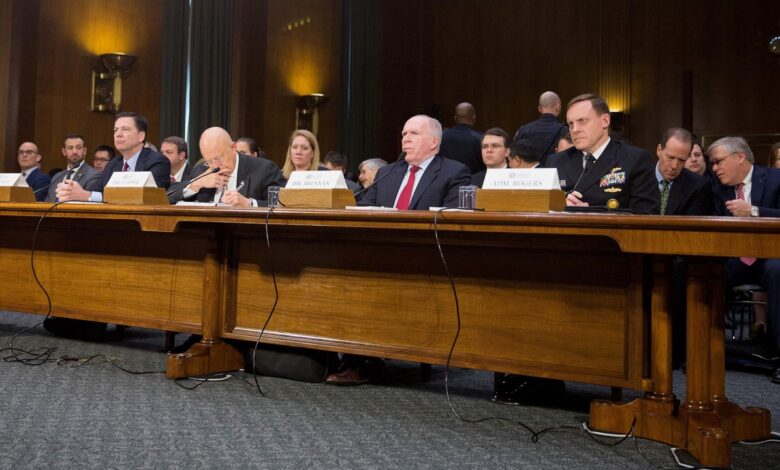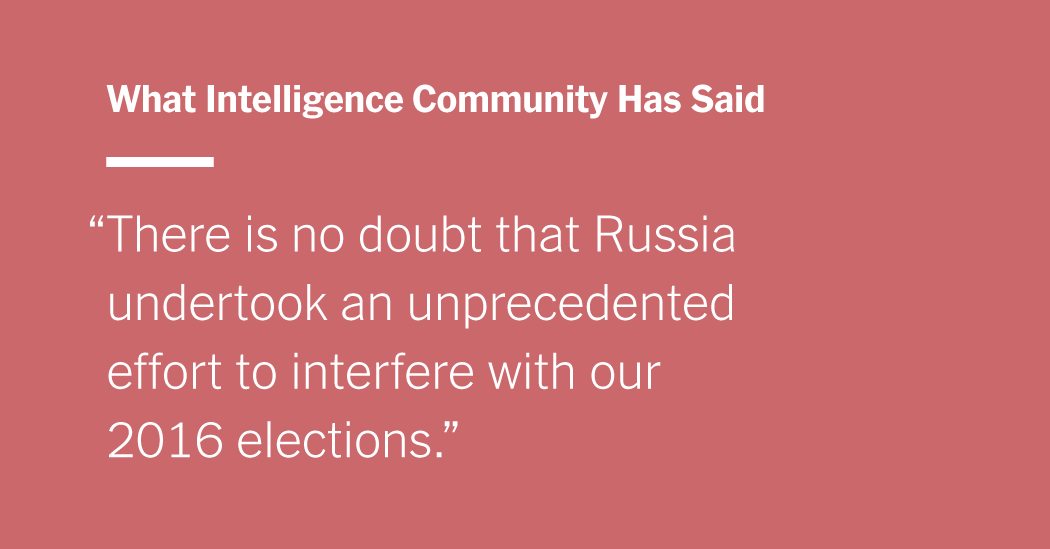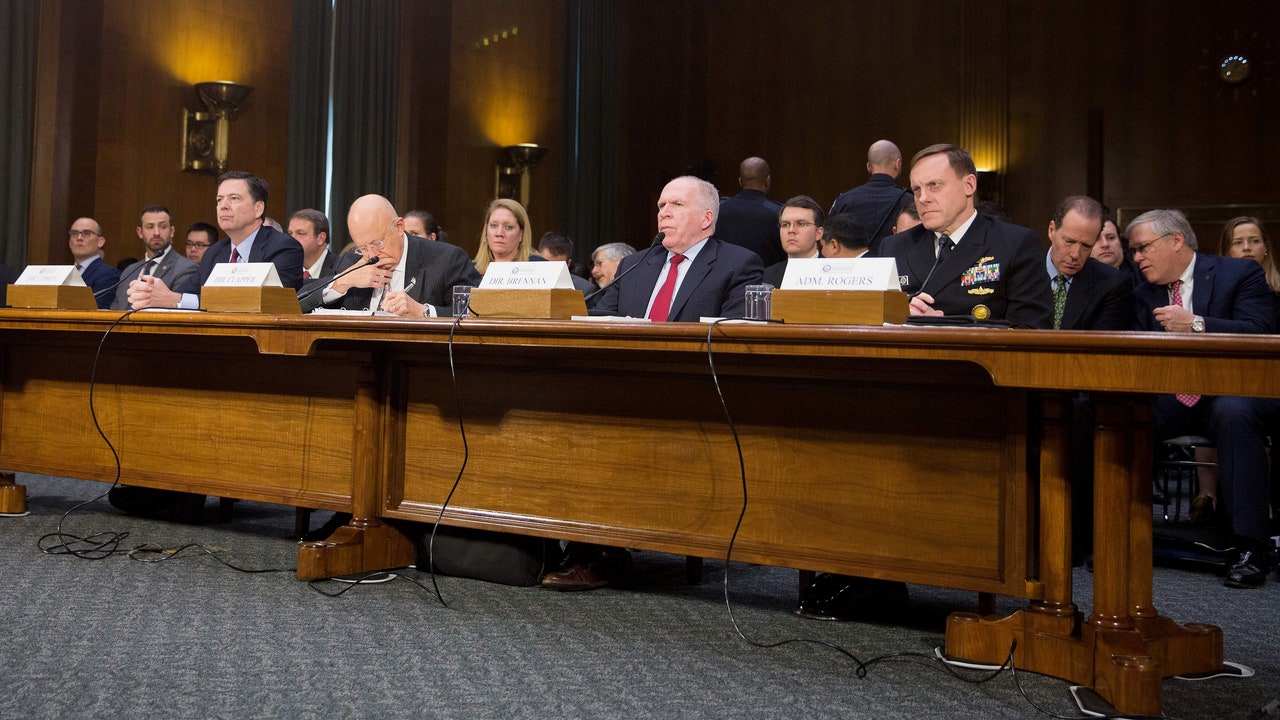
Five Eyes Issues Russian Cyber Threat Warning
Five Eyes issues Russian cyber threat warning – that’s a headline that should make us all sit up and take notice. We’re talking about a powerful intelligence alliance facing a sophisticated and persistent adversary. This isn’t just another news flash; it’s a glimpse into the high-stakes game of global cybersecurity, where the stakes are incredibly high and the consequences of failure are catastrophic.
This post delves into the specifics of the warning, examining the capabilities of the Russian cyber threat, the responses of the Five Eyes nations, and the vulnerabilities that need addressing.
The Five Eyes – the US, UK, Canada, Australia, and New Zealand – share intelligence and coordinate efforts to combat global threats. Russia, on the other hand, has a long and well-documented history of state-sponsored cyberattacks, ranging from disinformation campaigns to crippling infrastructure attacks. The recent warning highlights a growing concern: the scale and sophistication of these attacks are escalating, demanding a unified and proactive response from the Five Eyes and their allies.
We’ll explore the specifics of the threat, analyze the alliance’s response mechanisms, and discuss what the future might hold in this ongoing cyber war.
Five Eyes Alliance: Five Eyes Issues Russian Cyber Threat Warning
The Five Eyes intelligence alliance represents a unique and powerful collaboration in the realm of global security, particularly concerning cybersecurity threats. Its origins lie in the post-World War II era, evolving from a need for close intelligence sharing between nations facing a common enemy. Today, its focus has broadened considerably, encompassing a wide range of threats, including sophisticated cyberattacks emanating from state-sponsored actors and other malicious entities.
Understanding its structure and the responsibilities of its members is crucial for comprehending its effectiveness in countering these threats.The Five Eyes alliance comprises Australia, Canada, New Zealand, the United Kingdom, and the United States. Its operational structure is decentralized, relying heavily on bilateral and multilateral agreements and informal communication channels. There isn’t a formal, centralized command structure, instead favoring a network of shared intelligence and operational coordination.
This allows for flexibility and responsiveness, but also requires a high degree of trust and shared understanding between the member nations.
Five Eyes Composition and Structure
The Five Eyes alliance functions through a complex web of relationships. Each nation maintains its own independent intelligence agencies (such as the NSA in the US, GCHQ in the UK, and ASD in Australia), which collect and analyze intelligence. However, these agencies regularly share information and collaborate on joint operations. This sharing is facilitated by secure communication channels and established protocols for handling sensitive information.
The alliance doesn’t have a single, overarching headquarters, but rather relies on a network of liaison officers and regular meetings to coordinate activities and ensure consistent information flow. The strength of the alliance lies in its shared values, intelligence capabilities, and commitment to mutual security.
Cybersecurity Responsibilities of Each Member Nation
Each member nation brings unique capabilities and responsibilities to the alliance’s cybersecurity efforts. The United States, with its vast resources and technological prowess, often leads in developing advanced cyber capabilities and sharing intelligence. The United Kingdom excels in signals intelligence and cyber defense strategies. Australia and Canada contribute significantly to regional cybersecurity efforts and information sharing. New Zealand plays a vital role in contributing to the alliance’s overall intelligence picture and maintaining the security of its own critical infrastructure.
While the exact division of labor isn’t publicly disclosed, the overall goal is a synergistic approach where each nation’s strengths complement the others, leading to a more robust and comprehensive cyber defense posture.
Evolution of Five Eyes Cyber Threat Response Mechanisms
The Five Eyes alliance’s response to cyber threats has evolved significantly since its inception. Initially focused on traditional espionage and military intelligence, the alliance has adapted to the increasingly sophisticated nature of cyberattacks. The rise of the internet and the proliferation of interconnected systems necessitated a shift towards proactive cyber defense and intelligence gathering. This has involved the development of advanced cyber capabilities, increased collaboration between intelligence agencies, and the establishment of formal and informal mechanisms for information sharing and joint operations.
The alliance has also seen an increased focus on public-private partnerships, recognizing the importance of collaborating with industry to protect critical infrastructure and respond to cyber incidents effectively. For example, the increased collaboration between Five Eyes nations in sharing information about malicious cyber actors and their tactics, techniques, and procedures (TTPs) has been a crucial development in enhancing collective cyber resilience.
The sharing of threat intelligence allows each member nation to better protect its own systems and respond more effectively to cyberattacks.
Russian Cyber Threat Landscape
The Russian Federation possesses a sophisticated and multifaceted cyber warfare apparatus, posing a significant threat to global security. This capability stems from a combination of state-sponsored actors, criminal enterprises often operating with implicit or explicit government support, and a robust ecosystem of cyber-related expertise and infrastructure. Understanding the current capabilities of this landscape is crucial for effective defense and mitigation strategies.
Primary Types of Cyberattacks Attributed to Russian State-Sponsored Actors
Russian state-sponsored cyberattacks encompass a wide range of tactics, techniques, and procedures (TTPs). These attacks are often highly targeted and strategically motivated, aiming to achieve political, economic, or military objectives. They leverage both publicly available tools and custom-developed malware to achieve their goals. Key attack vectors include espionage, sabotage, disinformation campaigns, and disruption of critical infrastructure.
Examples of Sophisticated Cyber Weapons and Tactics Employed by Russia
Russia employs a variety of sophisticated cyber weapons and tactics. For instance, NotPetya, while initially attributed to a Ukrainian group, leveraged vulnerabilities in widely used software to spread globally, causing billions of dollars in damage. This attack demonstrated Russia’s capacity for widespread disruption and its willingness to inflict collateral damage. Other examples include the use of advanced persistent threats (APTs) like Turla and Cozy Bear, known for their ability to maintain long-term access to compromised systems, stealing sensitive information over extended periods.
The exploitation of zero-day vulnerabilities, where software flaws are unknown to the vendor, highlights Russia’s advanced capabilities in exploiting the latest software weaknesses.
Resources and Infrastructure Utilized by Russia to Conduct Cyber Operations
Russia’s cyber operations are supported by a significant investment in human capital, technological resources, and infrastructure. This includes highly skilled personnel with expertise in various cyber disciplines, access to advanced research and development capabilities, and a network of proxies and front companies that obscure attribution. The use of botnets, networks of compromised computers controlled remotely, enables large-scale attacks.
Furthermore, Russia leverages its existing intelligence agencies and military units to coordinate and execute cyber operations, blurring the lines between state-sponsored and criminal activity.
The Five Eyes’ recent warning about escalating Russian cyber threats has me thinking about strengthening our digital defenses. Building robust, secure applications is crucial, and that’s where learning about the innovative approaches outlined in this article on domino app dev, the low-code and pro-code future , becomes incredibly important. Improving our app development processes directly impacts our ability to withstand these kinds of attacks, making secure coding practices more vital than ever.
Table of Russian Cyberattacks, Five eyes issues russian cyber threat warning
| Attack Type | Target | Impact | Attribution Evidence |
|---|---|---|---|
| Data Breach | US Democratic National Committee (DNC) | Leak of internal emails, interference in US elections | Forensic analysis of malware, leaked documents, intelligence community assessments |
| Destructive Malware (NotPetya) | Global organizations | Widespread disruption, billions of dollars in damage | Malware analysis, network traffic analysis, geopolitical context |
| Espionage | Various governments and organizations | Theft of sensitive information, intellectual property | Analysis of stolen data, compromised systems, intelligence reports |
| Disinformation Campaign | Social media platforms, news outlets | Spread of propaganda, manipulation of public opinion | Analysis of social media posts, identification of bot networks, linguistic analysis |
The Five Eyes Response to Russian Cyber Threats

The Five Eyes alliance – comprising Australia, Canada, New Zealand, the United Kingdom, and the United States – faces a significant challenge in countering the persistent and sophisticated cyberattacks emanating from Russia. Their response is multifaceted, relying on a complex interplay of intelligence sharing, attribution efforts, and individual national strategies. This collaborative approach aims to deter further attacks and hold perpetrators accountable.The effectiveness of the Five Eyes response hinges on its robust intelligence-sharing mechanisms and coordinated efforts to attribute attacks.
While individual member states maintain their own cyber security strategies, the alliance provides a powerful framework for amplifying their collective capabilities.
Intelligence Sharing Mechanisms
The Five Eyes alliance utilizes a range of secure communication channels and collaborative platforms to share intelligence related to Russian cyber threats. This includes real-time threat information, indicators of compromise (IOCs), and details of attack techniques. The sharing of raw intelligence, combined with the analytical expertise within each member nation, allows for a more comprehensive understanding of the threat landscape and facilitates a more rapid and effective response.
This collaborative intelligence gathering enables quicker identification of vulnerabilities, the development of preventative measures, and the swift deployment of countermeasures. The high level of trust and established relationships between the Five Eyes partners are crucial to the success of this intelligence sharing.
Attribution of Cyberattacks to Russia
Attributing cyberattacks with certainty is a complex process. The Five Eyes employs a multi-layered approach involving technical analysis of malware, network traffic analysis, and the examination of digital fingerprints. This is complemented by human intelligence (HUMINT) and open-source intelligence (OSINT) gathering. For example, the attribution of the NotPetya attack in 2017, which caused billions of dollars in damage globally, involved the meticulous analysis of malware code, infrastructure used in the attack, and the timing of the attack coinciding with geopolitical events.
While definitive attribution is often challenging, the accumulation of evidence from multiple sources strengthens the case against the perpetrators. The weight of evidence often points towards state-sponsored actors within Russia.
Specific Instances of Collaborative Response
While specific details of collaborative operations are often kept confidential for national security reasons, publicly available information suggests several instances of coordinated responses. The coordinated sanctions imposed on individuals and entities linked to Russian cyber operations, for example, demonstrate a collaborative approach. Furthermore, joint public statements warning of specific Russian cyber threats, like those issued in the lead-up to major international events, highlight the alliance’s concerted efforts in deterrence.
These joint actions underscore the commitment of the Five Eyes to a unified response to Russian cyber aggression.
Comparison of Individual Member Responses
Each Five Eyes member possesses unique capabilities and priorities in addressing Russian cyber threats. The US, with its substantial resources and technological expertise, plays a leading role in developing advanced cyber defense technologies and conducting offensive cyber operations. The UK, with its strong signals intelligence capabilities, contributes significantly to intelligence gathering and analysis. Australia, Canada, and New Zealand, while possessing smaller cyber security agencies, play a vital role in contributing to the intelligence pool and implementing defensive measures within their own national infrastructures.
Despite variations in their individual capacities, their coordinated efforts within the Five Eyes framework amplify their overall effectiveness.
Vulnerabilities and Gaps in Five Eyes Cyber Defense
The Five Eyes alliance, while possessing significant intelligence and technological capabilities, faces considerable challenges in maintaining a robust collective cybersecurity posture against sophisticated adversaries like Russia. The sheer scale and complexity of the modern cyber landscape, coupled with inherent limitations in national jurisdictions and resource allocation, create vulnerabilities that Russia actively exploits. This necessitates a critical examination of these weaknesses to better understand the ongoing threat and develop more effective countermeasures.The coordination of responses across five distinct national jurisdictions presents a significant hurdle.
Different legal frameworks, data privacy regulations, and investigative priorities can lead to delays in information sharing and collaborative action. This fragmentation can hinder the timely identification and neutralization of threats, allowing Russian cyber operations to progress further before a unified response is mounted. Furthermore, the reliance on voluntary information sharing, while essential, can be hampered by bureaucratic processes and political sensitivities.
Jurisdictional Challenges and Data Sharing Limitations
The differing legal frameworks within the Five Eyes nations pose a significant obstacle to effective cyber defense. For instance, differences in data retention laws and cross-border data transfer regulations can impede the rapid sharing of critical intelligence. A cyberattack originating in one country, impacting infrastructure in another, may encounter legal roadblocks preventing swift investigation and collaborative action. This can lead to delays in identifying the perpetrators and mitigating the damage.
For example, a hypothetical scenario involving a Russian attack on a critical energy grid in the UK, utilizing servers located in Canada, would necessitate close collaboration between UK and Canadian authorities, navigating their respective legal frameworks to gather and share evidence. This process is often time-consuming and potentially fraught with bureaucratic hurdles.
Evolving Russian Cyber Tactics and Circumvention of Defenses
Russia’s cyber tactics are constantly evolving, employing increasingly sophisticated techniques to circumvent existing Five Eyes defenses. The use of advanced persistent threats (APTs), employing custom malware and exploiting zero-day vulnerabilities, necessitates a dynamic and adaptive response. Russia also leverages techniques like supply chain attacks, targeting software vendors to compromise numerous downstream users, making attribution and remediation extremely challenging.
The Five Eyes alliance’s warning about increased Russian cyber threats is seriously concerning. This heightened risk makes incidents like the one detailed on this article facebook asking bank account info and card transactions of users even more alarming, highlighting how easily personal financial data can be compromised. We need to be extra vigilant about online security given the current geopolitical climate and the potential for sophisticated attacks.
Moreover, the use of proxies and botnets obscures the origin of attacks, making it difficult to trace the activity back to Russian state actors. The NotPetya attack in 2017, while not definitively attributed to Russia, demonstrated the devastating potential of such supply chain attacks, impacting organizations worldwide and causing billions of dollars in damage. This highlights the need for a more proactive and predictive approach to cyber defense, focusing on threat intelligence and proactive vulnerability management.
Hypothetical Scenario: A Successful Russian Cyberattack
Imagine a scenario where a sophisticated Russian APT compromises a major telecommunications provider in Australia. The attack utilizes a zero-day vulnerability in a widely used network management system, granting the attackers extensive access to the provider’s network. This allows them to conduct widespread surveillance, potentially intercepting sensitive communications and data. Furthermore, the attackers plant backdoors, enabling them to maintain persistent access for future operations.
The initial response involves isolating the affected systems and launching an internal investigation. However, the widespread nature of the compromise and the sophisticated techniques employed by the attackers make containment and remediation a protracted and complex process. The subsequent investigation requires close collaboration with other Five Eyes nations, necessitating the sharing of sensitive intelligence and coordinating investigative efforts across multiple jurisdictions.
The legal complexities surrounding evidence gathering and cross-border cooperation would further complicate and delay the response, potentially allowing the attackers to achieve their objectives before being fully contained.
Proactive Measures and Future Strategies

The escalating sophistication of Russian cyberattacks necessitates a proactive and adaptable approach from the Five Eyes alliance. Moving beyond reactive measures, a focus on preventative strategies, strengthened international collaboration, and leveraging cutting-edge technologies is crucial to effectively neutralize future threats. This requires a significant shift towards anticipating and preempting attacks rather than simply responding to them after they occur.
A multi-layered strategy, combining enhanced intelligence gathering, robust cybersecurity infrastructure, and proactive defense mechanisms, is essential. This involves not only improving existing systems but also investing heavily in emerging technologies capable of predicting and mitigating future threats before they materialize. The focus must shift from simply reacting to incidents to actively shaping the cyber landscape to deter potential aggressors.
Examples of Proactive Cybersecurity Measures
The Five Eyes nations are already implementing several proactive measures. These include significantly increasing investment in threat intelligence platforms, which collect and analyze data from various sources to identify potential threats in real-time. This allows for preemptive actions, such as patching vulnerabilities before they can be exploited. Another key strategy involves strengthening critical infrastructure cybersecurity through mandatory security standards, regular penetration testing, and enhanced incident response capabilities.
For example, the UK’s National Cyber Security Centre (NCSC) actively works with organizations to improve their cyber defenses and shares threat intelligence to prevent widespread attacks. Similar initiatives exist within each of the Five Eyes nations, often involving close collaboration and information sharing.
The Role of International Cooperation
Effective mitigation of Russian cyber threats demands a global response that extends beyond the Five Eyes. Sharing threat intelligence and best practices with other nations, particularly those in Europe and the Asia-Pacific region, is crucial. This collaborative approach allows for a more comprehensive understanding of the threat landscape and enables a coordinated response to neutralize threats more effectively.
For example, the development of international standards and frameworks for cybersecurity could help harmonize efforts and improve overall security posture across different nations. Building stronger partnerships with private sector companies, particularly those involved in critical infrastructure, is also crucial. Joint exercises and information sharing can enhance the collective preparedness and response capabilities of both the public and private sectors.
Recommendations for Strengthening Five Eyes Cyber Defense
Several key recommendations can further strengthen the collective cyber defense capabilities of the Five Eyes alliance. These recommendations aim to create a more robust and adaptable defense system capable of countering the ever-evolving tactics of Russian cyber actors.
- Increased investment in research and development of advanced cyber defense technologies, including artificial intelligence and machine learning for threat detection and response.
- Development of a standardized framework for sharing threat intelligence and incident response information across the Five Eyes nations, streamlining communication and collaboration.
- Implementation of a more proactive approach to identifying and mitigating vulnerabilities in critical infrastructure, moving beyond reactive patching to predictive analysis and preventative measures.
- Strengthening public-private partnerships to enhance information sharing and joint cyber exercises, leveraging the expertise and resources of both sectors.
- Expansion of international cooperation to include a wider range of nations, creating a more global and comprehensive response to Russian cyber threats.
The Enhancement of Five Eyes Response Through Advanced Technologies
The integration of advanced technologies, particularly artificial intelligence (AI) and sophisticated threat intelligence platforms, is paramount. AI-powered systems can analyze vast amounts of data to identify patterns and anomalies indicative of malicious activity, enabling faster threat detection and response. Threat intelligence platforms, by consolidating data from multiple sources, provide a comprehensive overview of the threat landscape, allowing for more informed decision-making and proactive defense strategies.
For example, AI can be used to automate the analysis of network traffic, identifying suspicious activity that might otherwise go unnoticed. Similarly, threat intelligence platforms can provide early warnings of emerging threats, allowing organizations to proactively implement mitigations. The combination of these technologies enhances the speed, accuracy, and effectiveness of the Five Eyes response to Russian cyber threats.
Public Awareness and Information Sharing
The Five Eyes alliance faces a significant challenge in effectively communicating the Russian cyber threat to the public without causing undue alarm or undermining national security efforts. Balancing transparency with the need to protect sensitive intelligence and operational details is crucial for maintaining public trust and fostering effective collaboration. Their strategies involve a careful blend of direct communication, partnerships, and indirect awareness campaigns.The success of any cyber defense strategy hinges on public awareness and participation.
A well-informed populace is better equipped to identify and report suspicious activity, adopt safe online practices, and contribute to a more resilient cyber ecosystem. This necessitates a multi-pronged approach involving various stakeholders, including governments, private sector organizations, and individuals.
Strategies for Public Information Dissemination
The Five Eyes employ several strategies to inform the public about the Russian cyber threat. These include issuing public statements and advisories through official government channels, leveraging media partnerships to reach wider audiences, and supporting educational initiatives focused on cyber hygiene and threat awareness. They often focus on providing practical advice, such as regularly updating software, using strong passwords, and being wary of phishing attempts.
The specific approach varies across the Five Eyes nations, reflecting their unique political and media landscapes. For example, some nations might favor more direct warnings, while others might opt for a more subtle approach emphasizing best practices. This tailored approach acknowledges the diversity of public understanding and engagement across different countries.
The Importance of Public-Private Partnerships
Public-private partnerships are critical in raising public awareness and bolstering cybersecurity resilience. Private sector organizations possess valuable expertise in cybersecurity, threat intelligence, and incident response. Collaborations between governments and private companies facilitate the sharing of threat information, the development of effective mitigation strategies, and the dissemination of best practices to a wider audience. These partnerships also help bridge the knowledge gap between technical experts and the general public, making complex information more accessible and understandable.
The Five Eyes’ recent warning about escalating Russian cyber threats highlights the urgent need for robust security measures. This is especially crucial given the increasing reliance on cloud services, which is why understanding solutions like bitglass and the rise of cloud security posture management is so vital. Strengthening our cloud security posture is no longer optional; it’s essential to mitigating the risks posed by state-sponsored cyberattacks.
Examples include joint awareness campaigns, collaborative vulnerability disclosure programs, and shared threat intelligence platforms. The success of such initiatives relies on establishing clear communication channels, agreeing on data-sharing protocols, and fostering a culture of trust and mutual benefit.
Balancing National Security and Transparency
Balancing national security concerns with the need for transparency is a delicate act. Disclosing too much information could compromise ongoing investigations, reveal sensitive intelligence, or provide adversaries with valuable insights into defensive strategies. Conversely, withholding information can erode public trust and hinder efforts to foster collective cybersecurity resilience. The Five Eyes grapple with this challenge by carefully selecting the information they share publicly, focusing on general threats and best practices rather than specific operational details.
They also employ strategies like anonymization and aggregation to protect sensitive data while still conveying important information. This approach requires a nuanced understanding of risk assessment and a commitment to responsible information sharing.
Key Messages for Public Awareness Campaigns
The following bullet points Artikel key messages for effective public awareness campaigns about Russian cyber threats:
- Russian state-sponsored actors are actively targeting individuals and organizations.
- Cyberattacks can lead to data breaches, financial losses, and reputational damage.
- Strong passwords, multi-factor authentication, and regular software updates are crucial.
- Be wary of phishing emails, suspicious links, and unsolicited attachments.
- Report suspicious cyber activity to the appropriate authorities.
- Cybersecurity is a shared responsibility; everyone has a role to play.
- Stay informed about the latest cyber threats and best practices.
Ending Remarks
The Five Eyes’ response to the escalating Russian cyber threat is a crucial element in maintaining global cybersecurity. While the alliance possesses significant resources and capabilities, addressing the challenges requires ongoing adaptation, collaboration, and a commitment to proactive defense. The vulnerabilities identified necessitate a multi-pronged approach – enhancing intelligence sharing, strengthening national cybersecurity infrastructure, and fostering greater public awareness.
Ultimately, the success of the Five Eyes in mitigating this threat will depend on their ability to adapt to evolving tactics, maintain strong international partnerships, and leverage cutting-edge technologies to stay ahead of the curve. The fight is far from over, and the stakes remain incredibly high.
Key Questions Answered
What exactly constitutes the “Five Eyes” alliance?
The Five Eyes is an intelligence alliance comprising the United States, United Kingdom, Canada, Australia, and New Zealand. They share highly classified signals intelligence.
Are there any examples of successful Russian cyberattacks that have been publicly acknowledged?
While attribution is often difficult, several high-profile incidents, like the NotPetya ransomware attack, have been linked to Russian actors, though direct proof remains challenging to obtain publicly.
What role does public awareness play in countering this threat?
Public awareness is critical. Educating individuals and businesses about common cyber threats, phishing scams, and best practices for online security enhances overall resilience.
How can individuals protect themselves from Russian cyberattacks?
Basic cybersecurity hygiene is key: strong passwords, updated software, caution with suspicious emails, and using reputable antivirus software.




